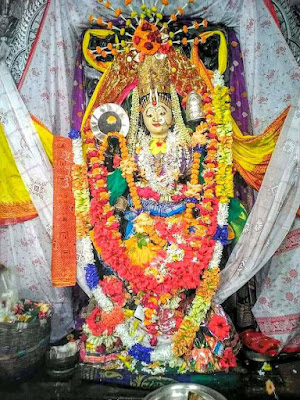The Mahakali Temple is a place of
spirituality and natural beauty that is highly regarded and is situated in
Pavagadh, Gujarat, among the picturesque landscape. This ancient temple, which
is dedicated to the powerful goddess Mahakali, has captivated devotees and
nature enthusiasts for centuries. The Mahakali Temple has become a beacon of
devotion and peace thanks to its divine aura, breathtaking surroundings, and
historical significance. Join us on a journey to discover this remarkable
temple's mystical appeal and cultural diversity.
The Mahakali Temple's origins can be
found as far back as the eighth century CE, with references to it. It is
thought to be one of the 51 Shakti Peethas—sacred sites dedicated to the
goddess Shakti—that are mentioned in Hindu scriptures. It has a lot of
historical and mythological significance. Legend has it that during Lord
Shiva's cosmic dance, a portion of the goddess Sati's body fell at this
location, conferring divine sanctity on the temple. The temple bears witness to
Gujarat's extensive cultural heritage, having seen empires rise and fall.
The Solanki dynasty's architectural
brilliance, with influences from both Hindu and Islamic styles, can be seen in
the Mahakali Temple. The temple's main sanctum has ornate pillars, intricate
carvings, and a tall shikhara (spire). The Dudhiya Talao, a magnificent stepped
tank that reflects the architectural splendor of the past, is also part of the
temple complex. The temple's combination of architectural styles adds to its
charm and delights visitors visually.
Devotees seeking spiritual
enlightenment, solace, and blessings place a high value on the Mahakali Temple.
Hymnal chants and the aroma of burning incense reverberate throughout the
temple, creating a tranquil setting for contemplation and prayer. In the belief
that the goddess possesses the ability to alleviate their suffering and bestow
blessings, devotees offer their prayers and seek the goddess' divine grace.
Everyone who goes to the temple feels a sense of sacred devotion because of the
serene setting and the powerful goddess's presence.
The Mahakali Temple's breathtaking
location atop Pavagadh Hill is one of its distinctive features. Panorama views
of the surrounding landscapes are available from the temple complex, which is
tucked away among lush vegetation. Taking in the natural splendor of the
hilltop, visitors can embark on a scenic hike. The excursion to the sanctuary
isn't just an otherworldly journey yet in addition a wonderful encounter for
nature lovers who value the hypnotizing vistas and quiet climate.
Throughout the year, the Mahakali
Temple holds a number of festivals that draw devotees and tourists from all
over the world. Because it commemorates the victory of goddess Durga over evil
forces, the Navaratri festival holds particular significance. The temple comes
to life at this time with colorful decorations, cultural shows, and devotional
music and dance. Devotees gather at the festival to celebrate the divine in an
atmosphere of joy, devotion, and spiritual fervor.
The Mahakali Temple's cultural and
architectural heritage is the subject of ongoing restoration efforts. Local
authorities and the Archaeological Survey of India (ASI) have taken steps to
preserve the temple's historical significance and structural integrity. The
temple's beauty and spiritual essence will be preserved so that future
generations can continue to appreciate and inspire them.
The Mahakali Sanctuary in Pavagadh,
Gujarat, holds an immortal charm with its mix of otherworldliness, compositional
glory, and normal quality. It is evidence of the region's deep devotion and
extensive cultural heritage. A profound experience of divinity, tranquility,
and awe-inspiring beauty can be had by visiting this sacred house. People who
are looking for solace, spirituality, and a deeper connection with the divine
continue to be inspired and moved by the Mahakali Temple.
To know more about 51 Sati Peethas (51 Shakti Pithas) click here.





.jpg)
.jpg)
.jpg)
.jpg)
.jpg)
.jpg)
.jpg)
.jpg)
.jpg)
.jpg)
.jpg)
.jpg)
.jpg)

.jpg)




